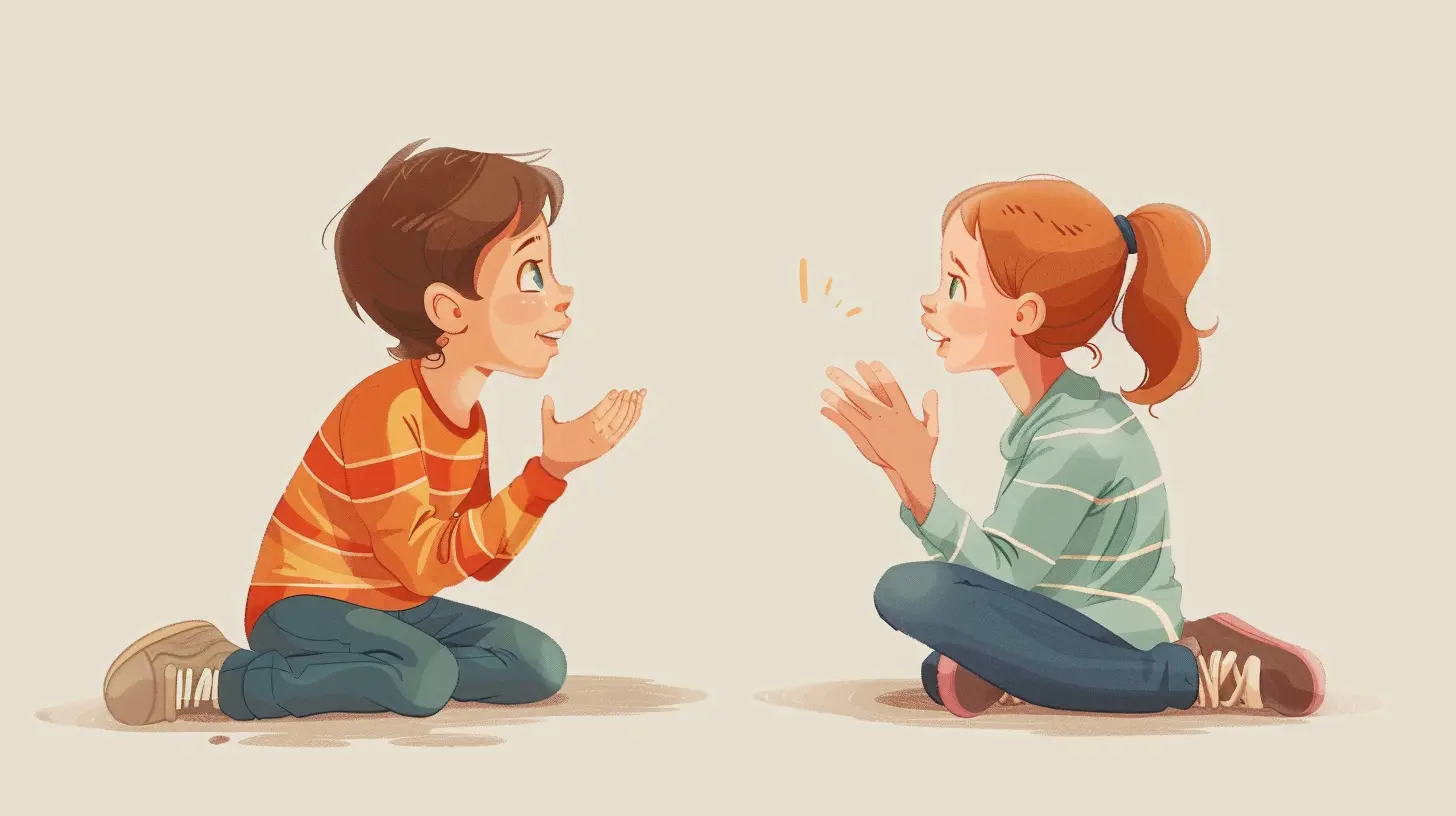Active Listening: How to Really Hear What Your Child is Saying
20 August 2025
As parents, we all want to be there for our children. But let’s be honest—how often do we truly listen? Not just nodding along while scrolling through our phones or mentally planning dinner, but actually tuning in to their words, their emotions, and what they’re really trying to tell us.
Active listening is a superpower that strengthens the parent-child bond, boosts your child’s self-confidence, and helps them feel valued. So, let’s dive into what active listening is, why it matters, and how you can master it.

What Is Active Listening?
Active listening means fully engaging in a conversation without distractions. It’s not just about hearing words—it’s about understanding the feelings behind them. Instead of thinking about what you’ll say next, you focus entirely on your child, making them feel heard and respected.Think of it this way: If communication were a game of catch, active listening is making sure you’re not just catching the ball but also throwing it back in a way that keeps the game going.

Why Active Listening Matters
Kids, just like adults, want to feel understood. When we listen actively, we show them their thoughts and emotions matter, which helps them develop confidence and trust.Here’s why active listening is a game-changer in parenting:
- Strengthens your bond – When kids feel heard, they open up more.
- Encourages emotional intelligence – By acknowledging their feelings, kids learn how to process and express emotions.
- Reduces conflicts – When they feel understood, they’re less likely to act out in frustration.
- Builds trust – If children know they can talk to you without being dismissed, they’re more likely to come to you with bigger issues later.

Signs You Might Not Be Actively Listening
Before we dive into how to actively listen, let’s check if you’re guilty of common listening pitfalls:- Interrupting – Jumping in with advice before they’ve finished their story.
- Multi-tasking – Nodding while scrolling through social media.
- Rushing – Giving a quick response just to move on.
- Dismissing feelings – Saying things like, “It’s not a big deal” or “You’ll be fine.”
- Tuning out – Thinking about your reply instead of focusing on what they’re saying.
If any of these sound familiar, don’t worry—we’ve all been there. The good news? It’s never too late to improve how we listen.

How to Practice Active Listening with Your Child
Now that we understand what active listening is (and isn’t), let’s break down how to actually do it.1. Give Them Your Full Attention
This might sound obvious, but it’s one of the hardest things to do in today’s busy world. Put your phone down, turn off the TV, and make eye contact. Show them they have your undivided attention.Pro Tip: If you’re genuinely busy and can’t give full attention right away, be honest. Say, “I really want to hear what you have to say. Can we talk in five minutes when I can focus better?”
2. Use Open-Ended Questions
Instead of asking questions that can be answered with a simple "yes" or "no," try open-ended ones that invite more conversation.Instead of:
❌ "Did you have a good day?"
Try:
✅ "What was the best part of your day?"
This encourages your child to share more details and feelings.
3. Reflect and Validate Their Feelings
Sometimes kids just want to be heard, not "fixed." Reflecting their emotions back to them shows you understand what they’re feeling.Example:
Child: "I don’t want to go to soccer practice. I’m the worst player on the team!"
Parent: "It sounds like you’re feeling frustrated and discouraged. That must be really tough."
Notice how the parent didn’t jump in with, "Oh, you’re great at soccer!" Instead, they acknowledged the feelings, making the child feel heard.
4. Repeat and Paraphrase
Rephrasing what your child said in your own words shows you’re actively listening.Example:
Child: "I had a bad day because my best friend sat with someone else at lunch."
Parent: "It sounds like you felt left out today. That must have been really hard."
This simple technique reassures kids that their emotions are valid.
5. Watch Nonverbal Cues
Sometimes, what your child isn’t saying is just as important as what they are saying. Pay attention to body language, facial expressions, and tone of voice.- Crossed arms? They might be feeling defensive.
- Avoiding eye contact? They could be embarrassed or unsure.
- Excited tone? Something great must have happened!
Tuning in to these cues helps you better understand what’s going on beneath the surface.
6. Resist the Urge to Solve Everything
As parents, we often want to jump in and solve problems right away. But sometimes, our kids just need to vent.Instead of immediately offering advice, try asking:
- “Do you want to talk about solutions, or do you just need me to listen?”
This lets them decide what they need in the moment.
7. Be Patient—Give Them Time to Speak
Kids don’t always organize their thoughts as quickly as adults do. Give them space to express themselves without rushing them.Silence can feel awkward, but sometimes, it’s needed for them to process their feelings.
8. Avoid Judgment or Overreaction
If your child shares something shocking or upsetting, take a deep breath before reacting.For example:
❌ "I can’t believe you did that! What were you thinking?!"
✅ "That sounds like a complicated situation. Tell me more about what happened."
Keeping your cool ensures your child feels safe opening up to you.
9. Show Empathy and Support
Imagine how big their problems feel from their perspective. What might seem minor to us can feel overwhelming to them.Instead of brushing their feelings aside, respond in a way that shows empathy:
- “That sounds really tough. I can see why you’re upset.”
- “I’m really proud of you for talking to me about this.”
- “I hear you. That must have been frustrating.”
10. End with Encouragement
Before wrapping up the conversation, reassure them that their thoughts and feelings matter.A simple response like, “I love that you came to me with this,” or “I really enjoyed our chat,” can leave a lasting impression.
The Long-Term Impact of Active Listening
When you consistently practice active listening, you’re setting the foundation for open communication as your child grows. They’ll be more likely to share their struggles, ask for advice, and feel confident in expressing emotions.And the best part? It’s never too late to start. Whether your child is a toddler or a teenager, making an effort to truly listen can transform your relationship.
Final Thoughts
Listening might seem like a small thing, but it has a huge impact. It’s the bridge that connects you and your child, strengthens your bond, and builds trust that lasts a lifetime.So, the next time your child starts talking, pause, tune in, and really hear what they’re saying. You might be surprised by what you learn.
all images in this post were generated using AI tools
Category:
Parenting SupportAuthor:

Tara Henson
Discussion
rate this article
1 comments
Grant Fry
Active listening fosters strong connections; it shows your child their feelings matter and encourages open communication.
September 9, 2025 at 4:08 PM

Tara Henson
Thank you for your insightful comment! Active listening truly is crucial for nurturing strong connections and promoting open dialogue with our children.


